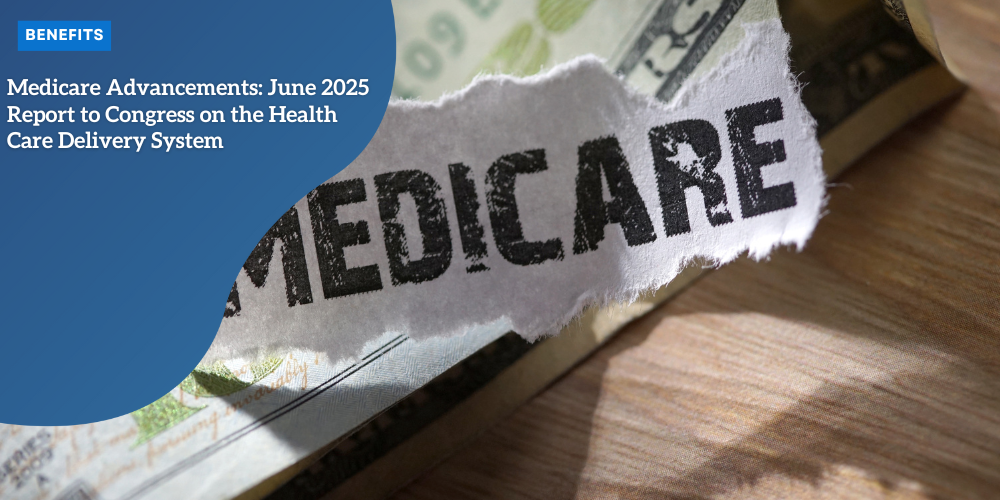Medicare Advancements: June 2025 Report to Congress on the Health Care Delivery System

Anúncios
Executive Summary
Fulfilling its mandate to the United States Congress, the Medicare Advisory Commission releases its comprehensive June 2025 report, presenting proposals and insights aimed at improving the Medicare payment system and the evolving delivery of health services.
This year’s edition features seven in-depth chapters, each offering evidence-based recommendations to support sustainability, efficiency, and equity within the Medicare program.
The report aims to refine payment structures, ensure better access to essential services, and enhance the care experience for beneficiaries across diverse settings.
In addition to the key topics addressed, the report underlines the critical role of continuous evaluation and adaptability in shaping Medicare’s future.
Anúncios
As health care demands increase and technologies evolve, Medicare must be positioned to respond effectively to demographic shifts, rising chronic conditions, and persistent access barriers in underserved communities.
The Commission’s efforts represent a roadmap not only for fiscal efficiency but for broader health equity.
1. Reforming Physician Fee Schedule Updates
The Commission proposes replacing current statutory updates to the Fee-for-Service (FFS) Physician Fee Schedule (PFS) with a new model tied to medical inflation.
This new adjustment would be based on a portion of the Medicare Economic Index (MEI), ensuring updates are more predictable and better aligned with the actual cost of delivering care.
In addition, the Commission emphasizes the importance of improving the accuracy of relative payment values for services.
Anúncios
This can be achieved through the timely collection of data that accurately reflects the varying costs across specialties and procedures.
Moreover, stakeholders such as provider groups and economists have voiced support for incorporating inflation-sensitive mechanisms to avoid abrupt disruptions in payment adequacy.
These proposed reforms would likely contribute to stabilizing provider participation, especially in rural and primary care sectors.
2. Supplemental Benefits in Medicare Advantage (MA)
The report identifies a significant increase in spending on supplemental benefits within MA plans, such as dental, vision, and wellness services.
The Commission reviewed the types of benefits offered and stressed the need for enhanced tracking of beneficiary usage via encounter data.
These data could facilitate a more detailed analysis of how enrollees actually use the supplemental benefits, thus informing more effective and targeted policy adjustments.
Additionally, it was recommended that CMS consider developing clearer frameworks to assess the cost-effectiveness and health outcomes associated with these supplemental offerings.
With improved evaluation tools, policymakers would be empowered to support services that have demonstrable impact on quality of life and long-term cost savings.
3. Home Health Care Use Among Medicare Advantage Enrollees
Using integrated datasets from encounter and home health assessment data, the Commission assessed the utilization patterns of home health services among MA enrollees.
The findings revealed notable regional and demographic variations in use.
This highlights the need for more uniform access to high-quality home-based care and the promotion of continuous services that help reduce avoidable hospitalizations.
Furthermore, the analysis showed that beneficiaries receiving consistent home health care experienced lower rates of acute care episodes, underscoring the clinical value of strengthening these services across all geographic and socioeconomic sectors.

4. Part D Drug Plans for FFS and MA Beneficiaries
The Commission examined the trends in standalone drug plans (PDPs) and Medicare Advantage drug plans (MA-PDs).
It found that internal policies, regulatory changes, and federal subsidies are influencing plan availability and cost structures for both government and beneficiaries.
It was recommended that ongoing monitoring be conducted to identify disparities between PDPs and MA-PDs, ensuring fairness in drug access across all beneficiaries.
Moreover, with prescription drug prices remaining a top concern among seniors, the report encourages further exploration of rebate structures, formulary management practices, and negotiation mechanisms to ensure affordability and minimize out-of-pocket costs.
5. Medicare Beneficiaries in Long-Term Care Institutions
An in-depth review of Medicare recipients residing in nursing homes and similar facilities was conducted.
The Commission highlighted regulatory actions taken by CMS to improve care quality, particularly through the adoption of Institutional Special Needs Plans (I-SNPs).
These specialized plans have proven effective in managing complex and chronic conditions, improving palliative care delivery, and reducing hospital readmissions.
Additionally, expanding access to I-SNPs across more facilities—especially in regions with aging populations—was cited as a strategic move to align care with patient needs while maintaining system-wide cost-effectiveness.
6. Measuring Rural Provider Quality
The report addressed the participation of rural providers in FFS Medicare’s quality measurement programs.
Many of these providers face structural and technological barriers to submitting required data, limiting their ability to benefit from performance-based incentives.
The Commission recommended a review of existing measurement criteria and expanded support for under-resourced rural regions to ensure fair and proportionate quality monitoring.
Strengthening broadband infrastructure and offering technical assistance were identified as potential avenues to close the digital divide and enable meaningful rural participation in value-based care initiatives.
7. Reducing Cost Sharing for Outpatient Services at Critical Access Hospitals (CAHs)
Critical Access Hospitals, which serve remote communities, were the focus of a proposal to reduce beneficiary cost-sharing for outpatient services.
The recommendation calls for aligning patient cost sharing with Medicare’s reimbursement rates, rather than the often higher charges set by the hospitals.
This adjustment would promote financial fairness for underserved populations and encourage the use of necessary services in isolated areas.
By lessening financial burdens for vulnerable patients, the proposal is expected to improve preventive care uptake and reduce the incidence of untreated conditions that later escalate to costly emergency interventions.
| 📌 Key Element | Description | Purpose / Benefit |
|---|---|---|
| 📊 Downloadable Data | Excel files with figures and graphics data are made available | Enables independent analysis and reinforces transparency |
| 🔍 Chapter Integration | No downloads if data are already clearly labeled in chapters | Avoids redundancy and maintains clean data presentation |
| 🔓 Open Data Commitment | Commission reaffirmed dedication to open data practices | Supports transparency, research, and accountability |
| 👥 Audience Engagement | Encourages use by researchers, advocates, and analysts | Fosters collaboration and informed Medicare reform debate |
Final Considerations
Focusing on strategic, data-driven solutions with a direct impact on beneficiaries’ well-being, the June 2025 Medicare Report reinforces the ongoing need for adaptive reforms.
By addressing complex challenges with pragmatic and detailed recommendations, the Commission reaffirms its essential role in guiding public health policy in the United States.
These reforms are considered crucial for maintaining the financial health of the Medicare system, expanding access to services, and improving care quality—while respecting the regional and socioeconomic diversity of the U.S. population.
Looking ahead, the report calls for sustained investment in data infrastructure, inter-agency coordination, and public-private collaboration to ensure that Medicare evolves alongside America’s dynamic health care landscape.






